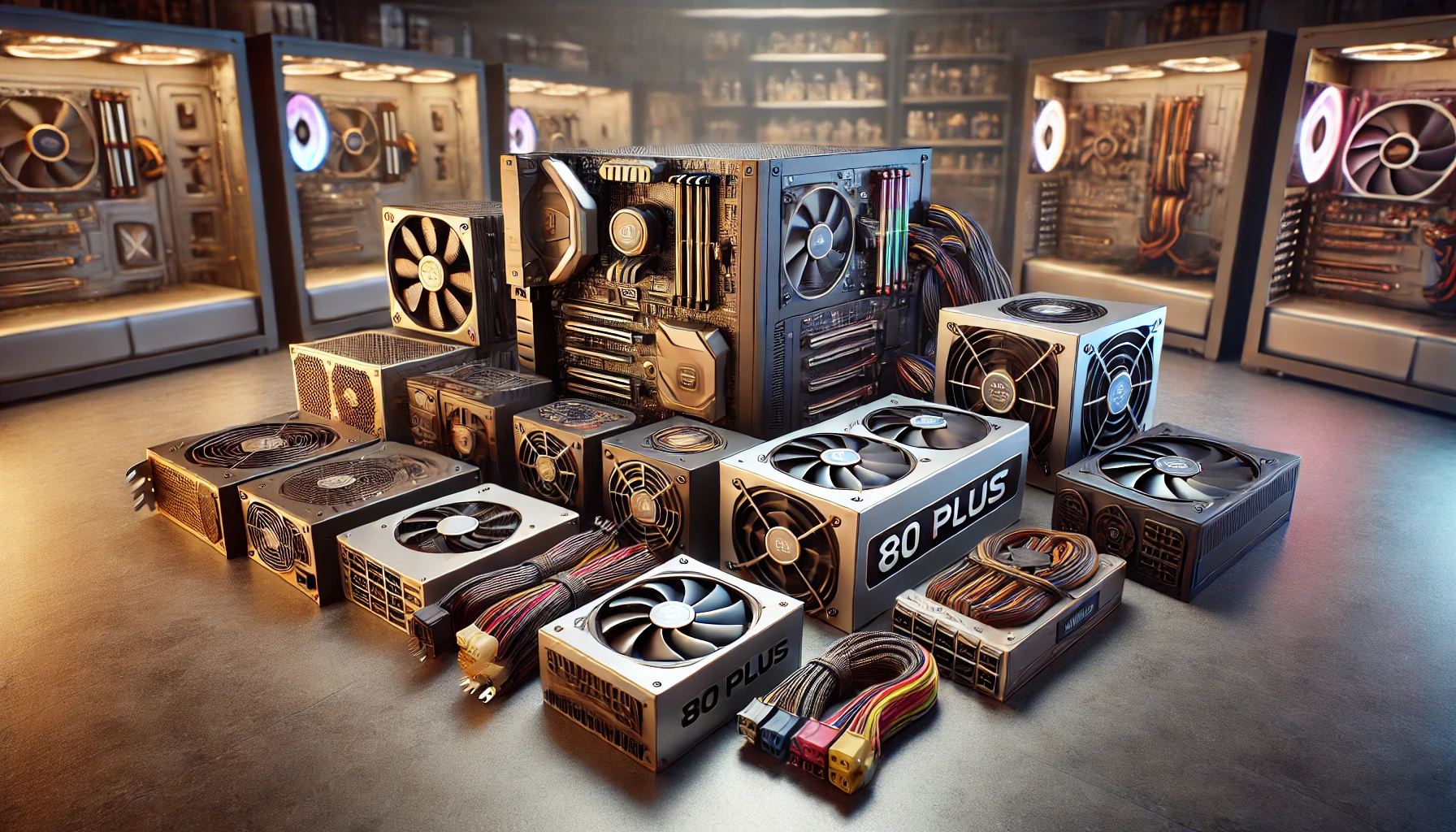The power supply unit (PSU) is the heart of your PC’s electrical system. It’s responsible for delivering stable and safe power to all components—CPU, GPU, motherboard, storage, and cooling. Choosing the right PSU is critical not only for performance but also for system stability, safety, and future upgradability.
In this guide, we’ll walk through the key factors to consider when choosing a PSU, the different types available in 2025, and how to avoid costly mistakes.
Why the PSU Matters
- A poor-quality PSU can damage components or cause system crashes
- Underpowered units may shut down under load
- A good PSU increases system longevity and efficiency
- Choosing the right wattage ensures future upgrade compatibility
Let’s dive into what makes a good PSU and how to choose the right one.
1. Determine Your Power Requirements
The wattage of your PSU determines how much power it can supply.
General Guidelines:
| System Type | Recommended Wattage |
|---|---|
| Basic Home/Office PC | 400W–500W |
| Mid-Range Gaming PC | 550W–650W |
| High-End Gaming PC | 750W–850W |
| Workstation/4K Gaming | 850W–1000W+ |
Use tools like PCPartPicker or OuterVision PSU Calculator to estimate your needs.
💡 Always aim for ~20% headroom above your estimated usage.
2. Choose the Right Efficiency Rating (80 PLUS)
The 80 PLUS certification indicates how efficiently the PSU converts power from the wall to usable DC power.
Efficiency Levels:
- 80 PLUS White – ~80% efficiency
- 80 PLUS Bronze – ~85% (good entry-level)
- 80 PLUS Silver
- 80 PLUS Gold – ~90% (great for most users)
- 80 PLUS Platinum – ~92%+
- 80 PLUS Titanium – Highest efficiency
✅ Tip: Gold is the sweet spot for most gaming and productivity builds in 2025.
3. Understand PSU Form Factors and Size
Most standard builds use ATX power supplies, but some compact systems may require SFX or SFX-L form factors.
- ATX: Full-size, fits most mid and full towers
- SFX/SFX-L: Smaller, used in Mini-ITX builds
Always check your case specs to ensure compatibility.
4. Modular vs Non-Modular vs Semi-Modular
Types:
- Non-Modular: All cables are attached; less flexibility, harder cable management
- Semi-Modular: Some fixed cables, others detachable
- Fully Modular: All cables are removable; best for airflow and customization
💡 Modular PSUs simplify cable routing and keep your build clean.
5. Check Connector Types and Quantities
Your PSU must have the right connectors for all your components:
| Component | Required Connectors |
|---|---|
| Motherboard | 24-pin ATX |
| CPU | 8-pin EPS (sometimes 2x 8-pin) |
| GPU | 6-pin, 8-pin, or 12VHPWR |
| SATA Devices | SATA Power |
| HDDs | Molex (for older drives) |
| Fans/RGB Hubs | May require Molex/SATA |
Newer GPUs like the RTX 4070+ often use 12VHPWR connectors, so make sure your PSU supports them.
6. Brand and Build Quality
Stick with reputable PSU brands with strong safety standards and reliable components:
- Trusted Brands: Seasonic, Corsair, EVGA, be quiet!, ASUS, Cooler Master, MSI, Thermaltake
- Look for:
- Japanese capacitors
- OCP/OVP/OTP protections (overcurrent, overvoltage, overtemperature)
- Long warranty (7–10 years is a good sign)
7. Noise and Cooling
PSUs come with cooling fans—some include fanless (silent) or hybrid modes (fan only runs under load).
If silence is important to you:
- Look for zero RPM fan mode
- Choose a PSU with fluid dynamic bearings (FDB) for quiet performance
8. Future-Proofing
- Always buy a little more wattage than you currently need
- Ensure your PSU can handle next-gen GPUs
- Look for PCIe Gen 5.0 and 12VHPWR readiness for upcoming graphics cards
Example PSU Setups (2025)
| Build Type | Suggested PSU |
|---|---|
| Budget PC (GTX 1650) | 450W Bronze (non-modular) |
| Mid-Tier (RTX 4060) | 650W Gold (semi-modular) |
| High-End (RTX 4080) | 850W Gold/Platinum (modular) |
| Creator (RTX 4090) | 1000W+ Platinum (modular) |
| Mini-ITX Build | 650W SFX Gold |
Common Mistakes to Avoid
- Choosing too low wattage
- Ignoring GPU connector type
- Buying cheap or generic brands
- Overpaying for ultra-high wattage you won’t use
- Forgetting to check if it fits in your PC case
Final Thoughts: Power You Can Rely On
Your power supply is more than just a box—it’s the backbone of system stability. Choosing a reliable, efficient, and properly rated PSU ensures your components run safely and your PC remains upgradeable in the future.
Always prioritize quality, compatibility, and proper wattage. Saving $20 on a PSU might cost you $2,000 in fried components.
